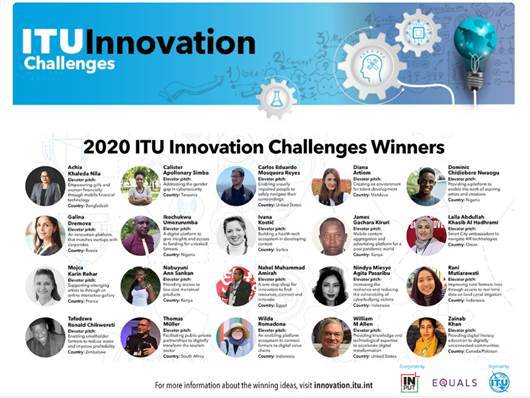Critical Connectivity Tops Discussion At ITU Virtual Digital World 2020
TECH DIGEST – Discussions at the recently held Virtual Digital World 2020, organized by the International Telecommunications Union (ITU) were centered around the essential nature of connectivity, the measures taken in the face of the pandemic and the unprecedented opportunities for the ICT sector in recovery from global crisis.
These key areas were highlighted by global ministers, regulators and industry leaders during Ministerial Roundtables at the three days event, where priority areas for governments and the ICT industry were pinpointed. The areas are:
Critical connectivity
The pandemic has underlined the vital importance of connectivity. The ability to connect has moved way beyond a business requirement. Digital technologies have become essential tools in accessing urgent information, healthcare, advice, work, education and news. Connectivity is critical in keeping people physically apart but virtually together.
At the same time, the COVID-19 pandemic has revealed a new digital divide, not only between developed and developing markets, but also between those who have and can benefit from digital technologies as our lives increasingly shift online, and those who cannot.
Immediate measures undertaken
In countries around the world, key players from government and industry rose to the challenge and worked together to roll out emergency measures and essential services such as text information alerts or hotlines, ensuring the health and safety of citizens. Short-term government actions to support the operators included regulatory relaxations on spectrum, infrastructure sharing and licencing, as well as recognizing telecom engineers as key workers able to move around to support and maintain critical infrastructure.
The seismic shift in working patterns as many people move towards remote working has also meant adapting to a huge increase in network traffic patterns. And networks have been able to cope with this change. Much of the work of governments has been forced online, and this has accelerated progress in e-government dramatically, which is expected to continue after the pandemic.
Opportunities and challenges
Read Also:
The pandemic has provided a major challenge as well as new opportunities for the ICT sector. Sectors such as e-health and e-education have boomed as a result and will continue to play important roles. In health terms, digital technologies have underpinned areas such as track and trace operations or assisting with remote COVID-19 diagnosis and telemedicine, as well as the prediction of patterns of contagion and outbreak using AI, big data and algorithms. Education has moved online, providing e-learning for students from schools and universities worldwide, helped by innovative connectivity solutions, including free public WiFi, use of universal service funds for rural service provision, government subsidies and free access to learning platforms and websites. The pandemic has also meant that countries have fast tracked legislation and national digital transformation plans.
The issue of digital literacy has become increasingly important in these difficult times. People need the right skillset to be able to survive and thrive in the digital world. Developing human capacity, therefore, needs to be at the centre of connecting the unconnected.
Cybersecurity is ever more critical–as more employees are working remotely and more key information is being disseminated via digital technology, attacks have also increased during the crisis. This has caused greater vulnerability and an increased awareness of the need for appropriate legislation and cross-border cooperation.
The road ahead
The message from ITU Virtual Digital World 2020 was clear: the new digital world must be built on continued collaboration and cooperation, nationally, regionally and internationally, to ensure sustainable connectivity for all.
Connectivity and digital technology should be placed at the forefront of policy concerns. Governments need to build a conducive environment for digital business and society, with measures such as harmonizing regulation, making available spectrum, attracting investment and creating incentives for business. The deployment of 5G networks also offers great potential to boost connectivity and speed recovery.
Efforts to bridge the digital divide must incorporate the public sector, the international community and all players across industries, including different technology providers – satellite, mobile, fixed, 5G and emerging providers – as well as innovative SMEs.
ITU Digital World 2020 and beyond
ITU Virtual Digital World 2020 was a three-day online event, co-organized by ITU and Viet Nam’s Ministry of Information and Communications (MIC), comprising Ministerial Roundtables, Forum webinars and an online exhibition, and bringing together some 80 high-level speakers including ministers, regulators and industry leaders from around the world.
Alongside the Ministerial Roundtable and Forum, ITU Virtual Digital World 2020 also included a global virtual exhibition, open online until the end November, organized by Viet Nam and supported by ITU, which showcased the tech innovations of more than 150 virtual exhibitors from Viet Nam and global companies. It also included 10 national pavilions from around the world including Viet Nam, Cambodia, Cuba, Finland, India, Japan, Korea, Laos, Timor Leste and Zambia.


















